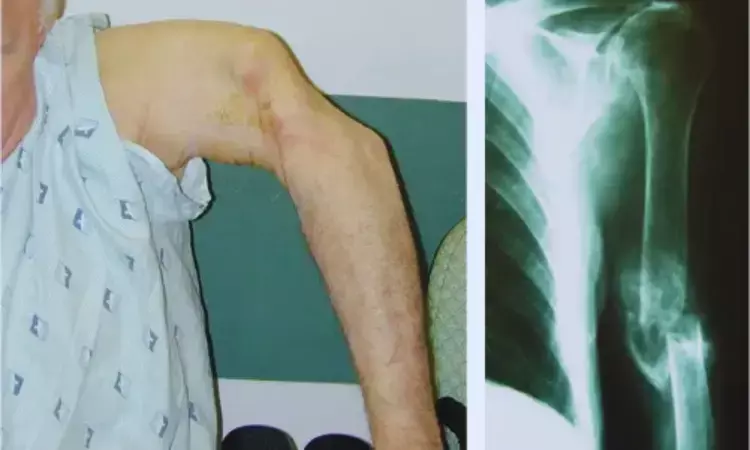- Home
- Medical news & Guidelines
- Anesthesiology
- Cardiology and CTVS
- Critical Care
- Dentistry
- Dermatology
- Diabetes and Endocrinology
- ENT
- Gastroenterology
- Medicine
- Nephrology
- Neurology
- Obstretics-Gynaecology
- Oncology
- Ophthalmology
- Orthopaedics
- Pediatrics-Neonatology
- Psychiatry
- Pulmonology
- Radiology
- Surgery
- Urology
- Laboratory Medicine
- Diet
- Nursing
- Paramedical
- Physiotherapy
- Health news
- Fact Check
- Bone Health Fact Check
- Brain Health Fact Check
- Cancer Related Fact Check
- Child Care Fact Check
- Dental and oral health fact check
- Diabetes and metabolic health fact check
- Diet and Nutrition Fact Check
- Eye and ENT Care Fact Check
- Fitness fact check
- Gut health fact check
- Heart health fact check
- Kidney health fact check
- Medical education fact check
- Men's health fact check
- Respiratory fact check
- Skin and hair care fact check
- Vaccine and Immunization fact check
- Women's health fact check
- AYUSH
- State News
- Andaman and Nicobar Islands
- Andhra Pradesh
- Arunachal Pradesh
- Assam
- Bihar
- Chandigarh
- Chattisgarh
- Dadra and Nagar Haveli
- Daman and Diu
- Delhi
- Goa
- Gujarat
- Haryana
- Himachal Pradesh
- Jammu & Kashmir
- Jharkhand
- Karnataka
- Kerala
- Ladakh
- Lakshadweep
- Madhya Pradesh
- Maharashtra
- Manipur
- Meghalaya
- Mizoram
- Nagaland
- Odisha
- Puducherry
- Punjab
- Rajasthan
- Sikkim
- Tamil Nadu
- Telangana
- Tripura
- Uttar Pradesh
- Uttrakhand
- West Bengal
- Medical Education
- Industry
Surgery Provide Early Benefits Among Patients with Humeral Shaft Fractures: JAMA

UK: A recent randomized clinical trial compared operative and nonoperative management of humeral shaft fractures, shedding light on their benefits and risks. The findings were published online in JAMA Surgery on March 26, 2025.
The researchers found that surgery provided early functional advantages over bracing for patients with humeral shaft fractures. However, these benefits must be weighed against operative risks, as there was no significant difference in outcomes at 1 year between surgical and non-surgical treatments.
Humeral shaft fractures are commonly treated without surgery, but this approach may lead to higher rates of nonunion and potentially poorer functional outcomes compared to operative fixation. Given these concerns, evaluating the effectiveness of surgical intervention versus nonoperative management using functional bracing becomes crucial. Understanding whether surgery offers significant advantages in terms of healing, mobility, and overall recovery can help guide treatment decisions.
Against the above background, William M. Oliver, Edinburgh Orthopaedics, Royal Infirmary of Edinburgh, Edinburgh, United Kingdom, and colleagues aimed to determine if there is a meaningful difference in outcomes between the two approaches for adults with isolated, closed humeral shaft fractures, providing valuable insights into the most effective management strategy.
For this purpose, the researchers conducted a prospective, superiority, parallel-group, randomized clinical trial at a major trauma center in the UK between September 2018 and October 2023. The study included 70 adults with isolated, closed humeral shaft fractures, excluding those with absolute surgical indications, pathological or periprosthetic fractures, multiple traumas, significant frailty, or follow-up constraints. Patients were randomized to open reduction and plate fixation (n=36) or functional bracing (n=34), with seven not receiving the assigned treatment.
The primary outcome was the DASH score at three months, while secondary outcomes included quality of life, pain, joint mobility, and complications.
The key findings of the study were as follows:
- The study included 70 patients with a mean age of 49, comprising 38 females (54%) and 32 males (46%).
- At three months, 66 patients (94%) had completed follow-up.
- The operative group showed a significantly better DASH score at three months (difference: 15.0) and six weeks (difference: 14.7), but not at six months or twelve months.
- Surgery was associated with higher EQ-5D scores at six weeks (difference: 0.126).
- At six months, the EQ-VAS score was higher in the operative group (difference: 7).
- SF-12 MCS scores favored surgery at six weeks (difference: 9.3), three months (difference: 6.9), and six months (difference: 7.1).
- Brace-related dermatitis was more common in the nonoperative group (18% vs. 3%).
- Nonunion occurred in 11% of cases, with a higher rate in the nonoperative group (18% vs. 6%).
The study demonstrated that surgical management of isolated closed humeral shaft fractures offered early functional benefits, including enhanced upper-limb function, improved quality of life, pain relief, and better range of motion. However, the researchers observed that these advantages diminished beyond six months, with no significant differences in patient-reported outcomes at one year.
"Given the potential risks of surgery, these short-term gains should be carefully weighed against operative complications. Identifying patients at a higher risk of nonunion and considering early surgical intervention in select cases may offer the most appropriate treatment approach," the authors concluded.
Reference:
Oliver WM, Bell KR, Carter TH, et al. Operative vs Nonoperative Management of Fractures of the Humeral Diaphysis: The Humeral Shaft Fracture Fixation Randomized Clinical Trial. JAMA Surg. Published online March 26, 2025. doi:10.1001/jamasurg.2025.0301
Dr Kamal Kant Kohli-MBBS, DTCD- a chest specialist with more than 30 years of practice and a flair for writing clinical articles, Dr Kamal Kant Kohli joined Medical Dialogues as a Chief Editor of Medical News. Besides writing articles, as an editor, he proofreads and verifies all the medical content published on Medical Dialogues including those coming from journals, studies,medical conferences,guidelines etc. Email: drkohli@medicaldialogues.in. Contact no. 011-43720751


